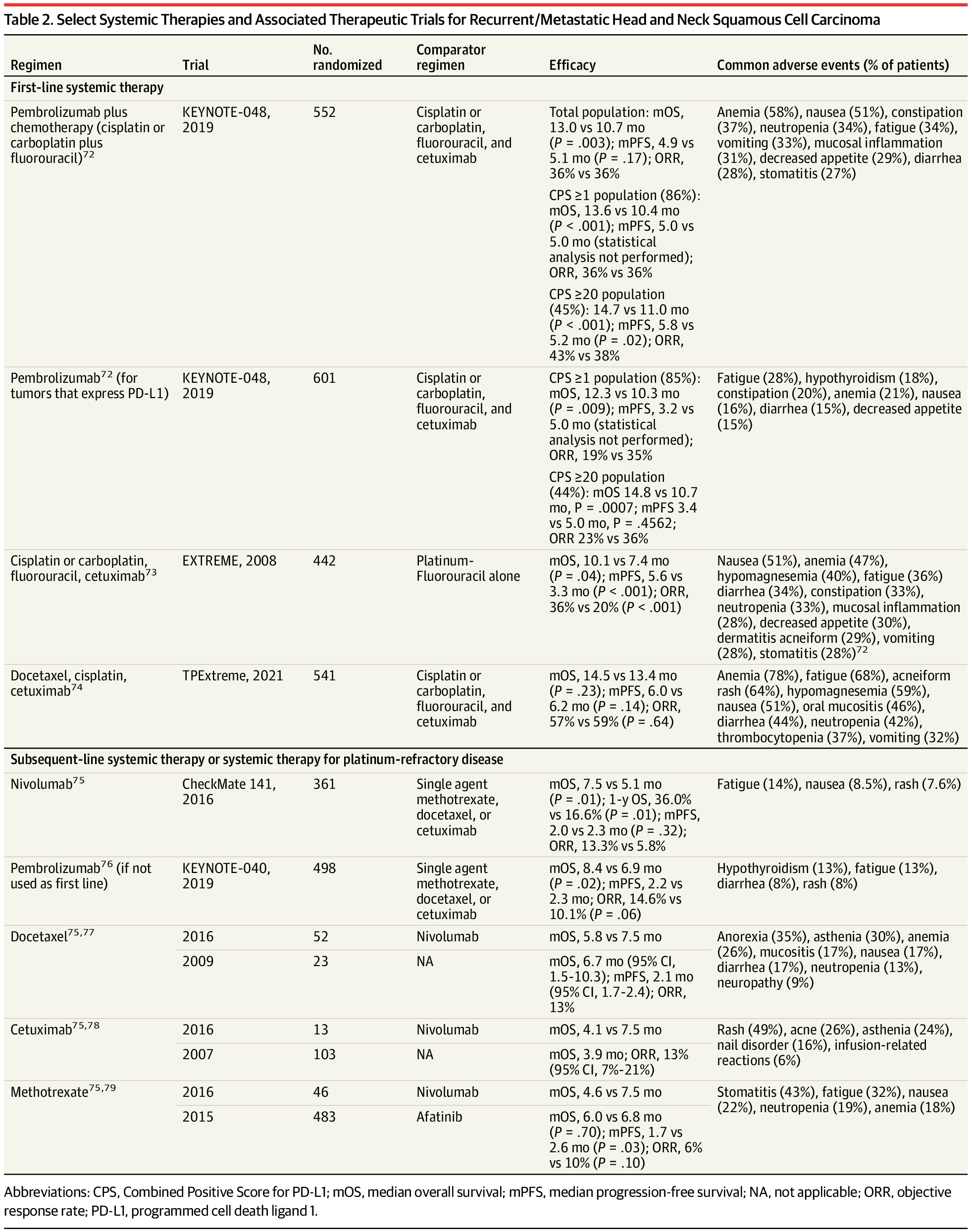Researchers in the US have used quantum chemistry to explain why ozone catalysts degrade during water electrolysis.
Get the latest international news and world events from around the world.

Head and Neck Cancer
Head and neck cancer is the seventh most common cancer worldwide. In 2024, approximately 58 450 individuals were diagnosed with oral cavity and pharynx cancer and 12 650 were diagnosed larynx cancer in the US.
Although many malignancies originate in the head and neck region, the term head and neck cancer typically applies to tumors arising in the lining or mucosa of the upper aerodigestive tract. Approximately 90% of head and neck cancers are caused by squamous cell carcinoma.
This Review summarizes the epidemiology, pathophysiology, clinical presentation, diagnosis, and treatment of head and neck squamous cell carcinomas (HNSCC) of the upper aerodigestive tract.
This review examines the epidemiology, risk factors, clinical presentation, diagnosis, and treatment of head and neck squamous cell carcinomas of the upper aerodigestive tract.

Check Out Backrooms — Tape 2, Blender-Made Film Set in Liminal Spaces
Check out Lokendens’ film, created in the style of found footage.


Nvidia unveils new open-source AI models amid boom in Chinese offerings
Nvidia on Monday revealed the third generation of its “Nemotron” large-language models aimed at writing, coding and other tasks. The smallest of the models, called Nemotron 3 Nano, was being released Monday, with two other, larger versions coming in the first half of 2026.
Nvidia, which has become the world’s most valuable listed company, said that Nemotron 3 Nano was more efficient than its predecessor — meaning it would be cheaper to run — and would do better at long tasks with multiple steps.
Nvidia is releasing the models as open-source offerings from Chinese tech firms such as DeepSeek, Moonshot AI and Alibaba Group Holdings are becoming widely used in the tech industry, with companies such as Airbnb disclosing use of Alibaba’s Qwen open-source model.

US develops method to spot illegal nuclear material origins in 30 mins
A simple instrument like mass spectrometer can revolutionize how unknown samples are investigated in the future.
A new method developed by researchers at the Los Alamos National Laboratory (LANL) can spot the origins of illegal nuclear material in just 30 minutes. Requiring only a relatively simple instrument, such as a mass spectrometer, the method can help identify the source of any nuclear material outside regulatory control.
According to the International Atomic Energy Agency (IAEA), theft or improper disposal can result in nuclear and radiological material falling out of regulatory control. In 2,024,124 such incidents were reported to the IAEA, of which at least three were linked to “trafficking or malicious use”
Earlier this year, a leader of a crime syndicate pleaded guilty to trafficking nuclear material in a New York court. The accused had discussed sale of yellowcake uranium with an undercover agent.

Neurons Use a Fast Structural Signal to Stabilize Communication
Researchers have uncovered a fast, structural mechanism that allows neurons to stabilize communication when synaptic function is disrupted.
Instead of relying on electrical activity, the brain uses physical rearrangements of postsynaptic receptors to signal the sending neuron to boost neurotransmitter release.
This rapid correction restores balance within milliseconds, ensuring that circuits supporting movement, learning, and memory remain functional.
The findings shed new light on how the brain maintains stability when communication falters.
Neurons can rapidly rebalance their communication using a structural signal rather than electrical activity, overturning long-held assumptions about how synapses maintain stability.

Intravascular immune surveillance against viremia requires spatiotemporal coordination between Kupffer cells and ILC1s
Zhang et al. reveal that hepatic ILC1s rapidly transition from intravascular patrolling to motility arrest upon encountering infected Kupffer cells (KCs) during viremia. This behavioral switch, driven by cell intrinsic type I IFN signaling and coupled to ILC1 activation, fortifies the antiviral function of KCs to restrict systemic viral dissemination.
